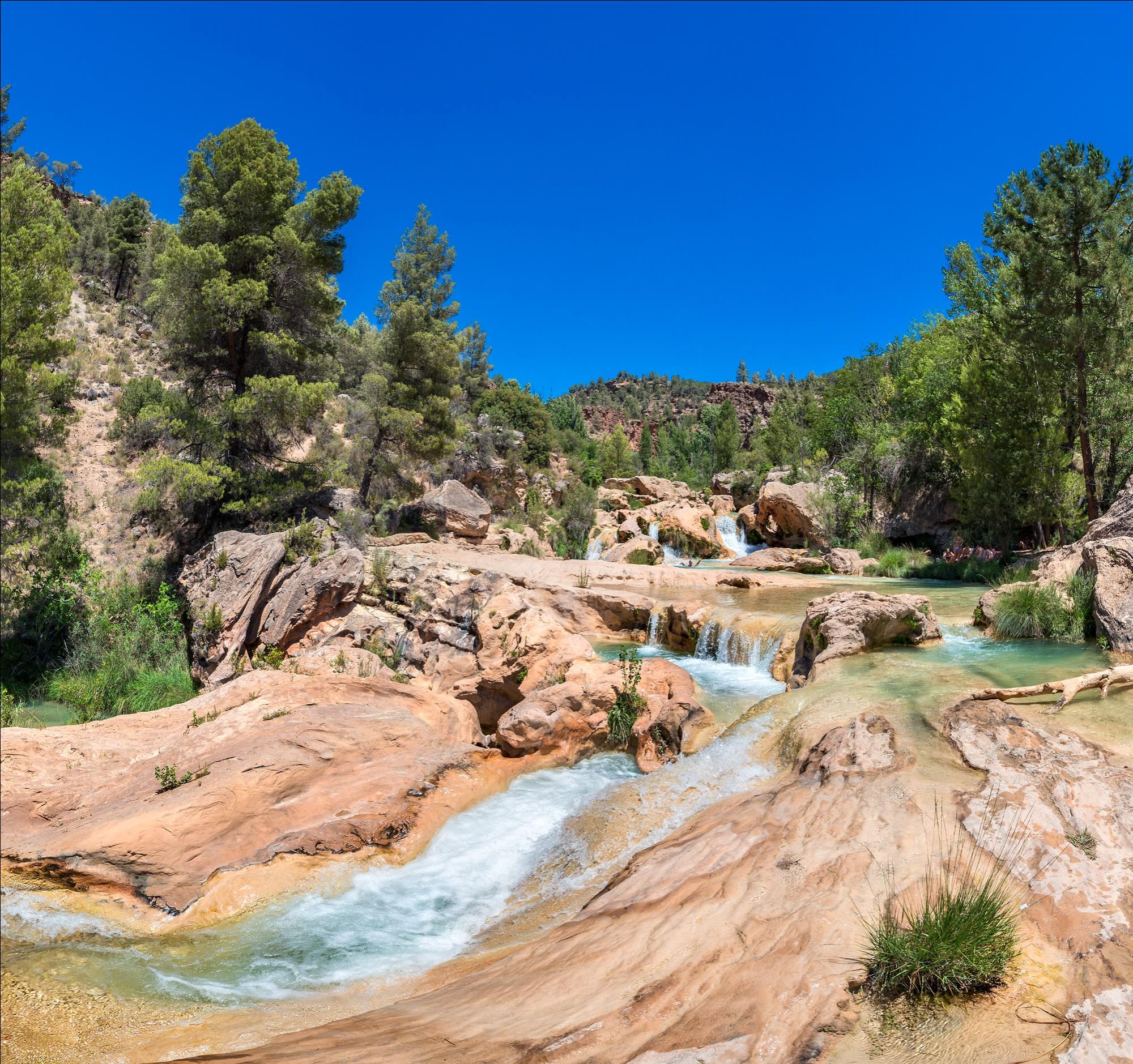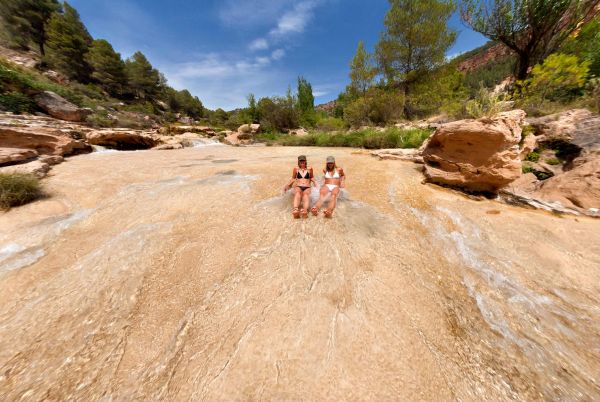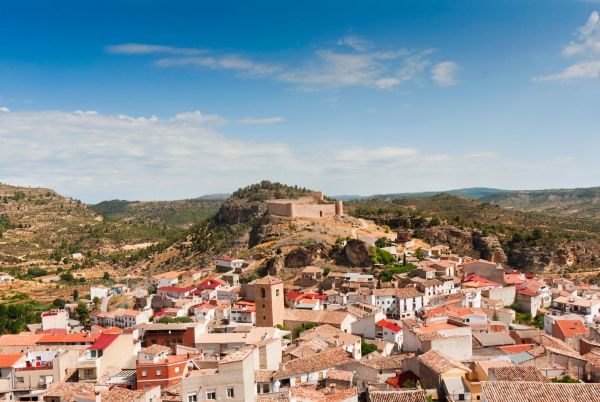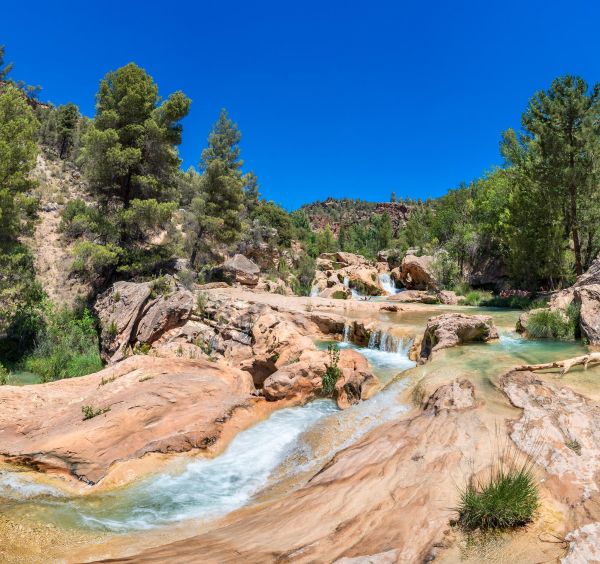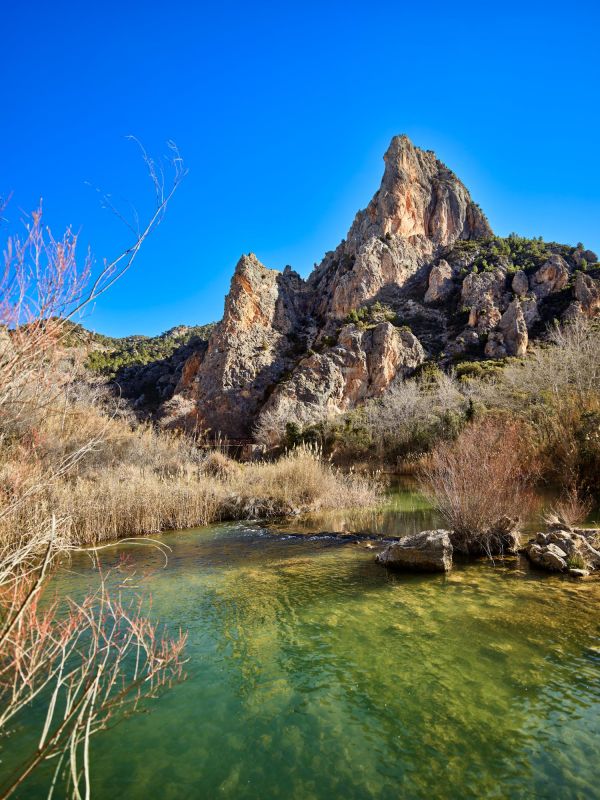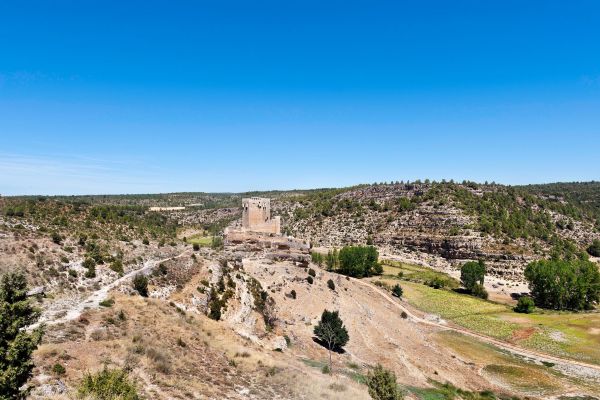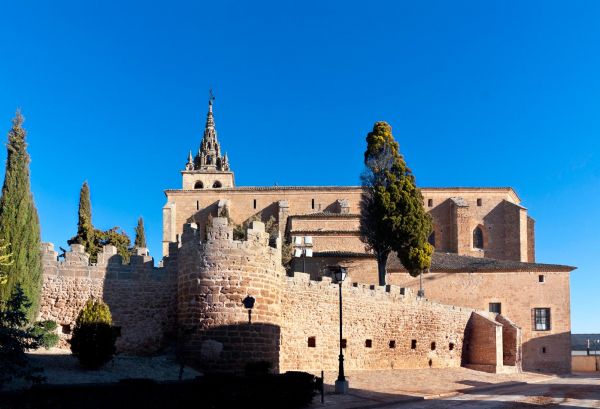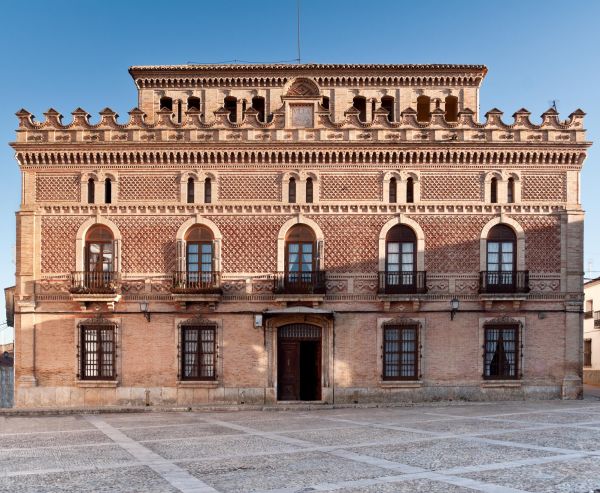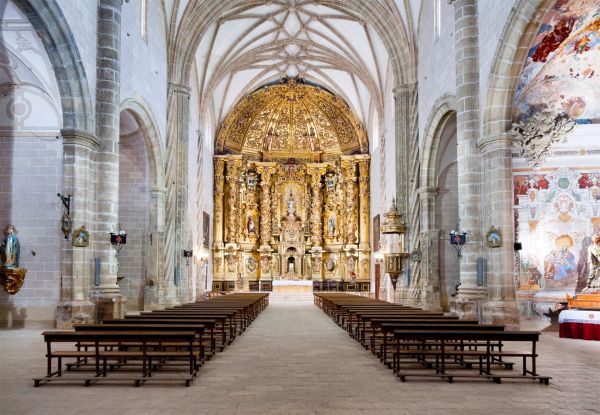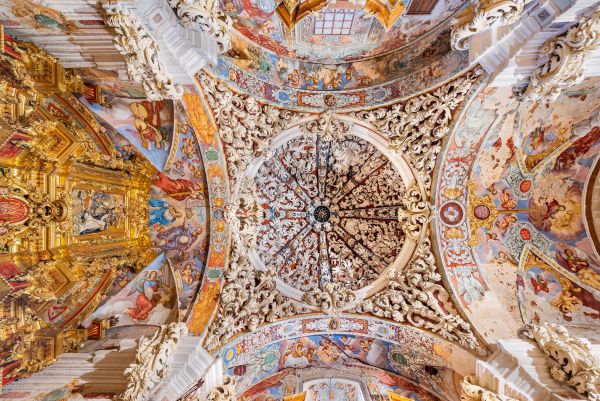From Hoces del Cabriel to Hoces de Enguídanos
Cuenca
For 12 km, between the towns of Minglanilla and Iniesta, the Cabriel river winds and forms a natural border between the provinces of Cuenca, Valencia and Albacete. The erosion of the water and wind has created distinctive and eye-catching types of relief: gorges with rocky escarpments and drops of up to 100 metres, gullies and jagged edges... In short, an exceptionally valuable geomorphological destination. We are in the Hoces del Cabriel Nature Reserve.
The Reserve is highly protected, therefore only one trail is authorised for visits. The journey takes one and a half hours, around 6 km there and back. The number of visitors is limited to 100 people/day from September to June, and to 60 people/day in July and August.
Visits can be booked by calling 969 177 721.
This path, which mainly follows the river, allows us to walk around the base of impressive jagged rock formations. If we pay attention and stay silent, we can see different animal species such as squirrels and mountain goats, and in the sky, the endangered Golden and Bonelli’s eagles.
The next recommendation is for foodies: Villanueva de la Jara, the cradle of the mushroom. The first mushroom producer in Spain and a pioneer as the first town to professionally grow mushrooms in the 1960s, now even has the Mushroom Growing Interpretation Centre. This is the place to taste and buy mushrooms.
Villanueva de la Jara offers impressive historical and artistic heritage, making it worth a stop. The Renaissance-style main square; the 16th century city hall; the watchtower, the granary and the primitive council, the Royal Prison, etc. the Massó Inn, the Villa Enriqueta palace; the Basilica of Our Lady of the Assumption, which is considered the finest late-Gothic church in the province. Many stately homes from the 16th-, 17th- and 18th-centuries adorned with façades, balconies, crests and grilles are dotted around the town’s streets.
Before reaching Enguídanos, we can stop to take a look at the 12th-century Paracuellos de la Vega castle, which although small, is extremely elegant atop a rock in the valley of the stream.
Finally, Enguídanos, a real natural beauty. In the spot known as Las Chorreras, the Cabriel river flows beautifully, with cleaner, more crystalline water than ever; there are multiple pools for taking a dip, areas for lying down, waterfalls, small river beaches, caves, etc. The area cannot be accessed by car and only one bag is allowed per person, with only what is strictly necessary. At the entrance to Chorreras, parking is available for €10 and open from 9 am to 9 pm daily.
But it’s not just Chorreras. Other spots are worth a mention: Charandel and Perejil; the gorges of the Mira, Agua and San Martín rivers; the Cerrada, Playeta and Lastra gorge; El Salobral, baths with a salt-water spring; Golpecillo, a waterfall in the Guadazaón river; the Batanjeo reservoir and the Contreras reservoir, several springs and fountains, etc. The natural heritage and water are certainly Enguídanos’ strong point. Adapted for both, the town’s unique tapestry makes it the ideal place to overnight and get some sleep in, both before you set off and for resting upon arrival.
May also be of interest to you
Castilla-La Mancha Tourism in 2023. All rights reserved.
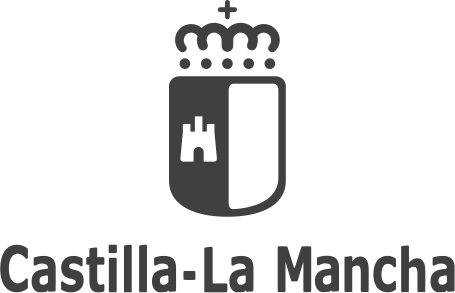
 365
365
